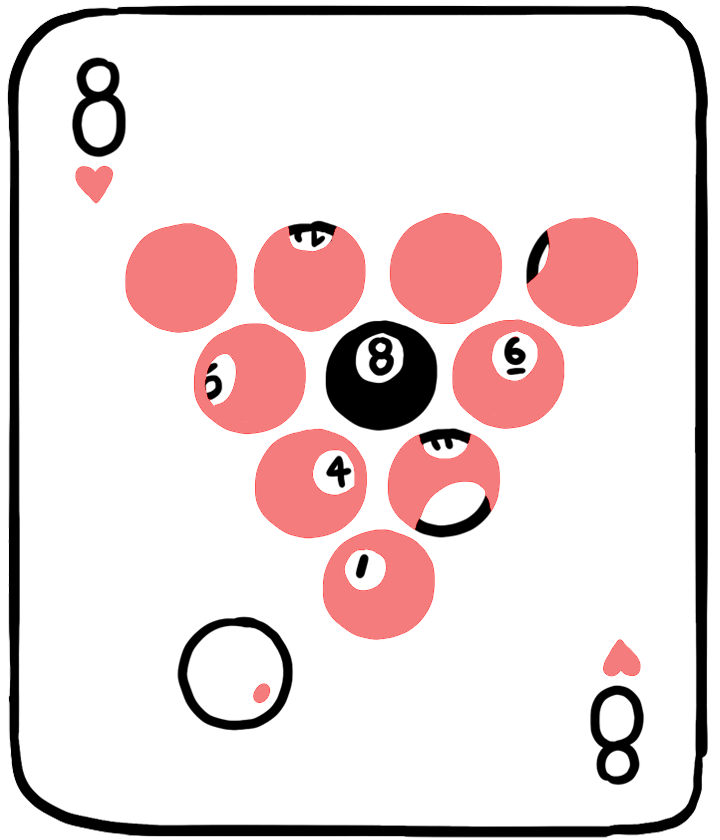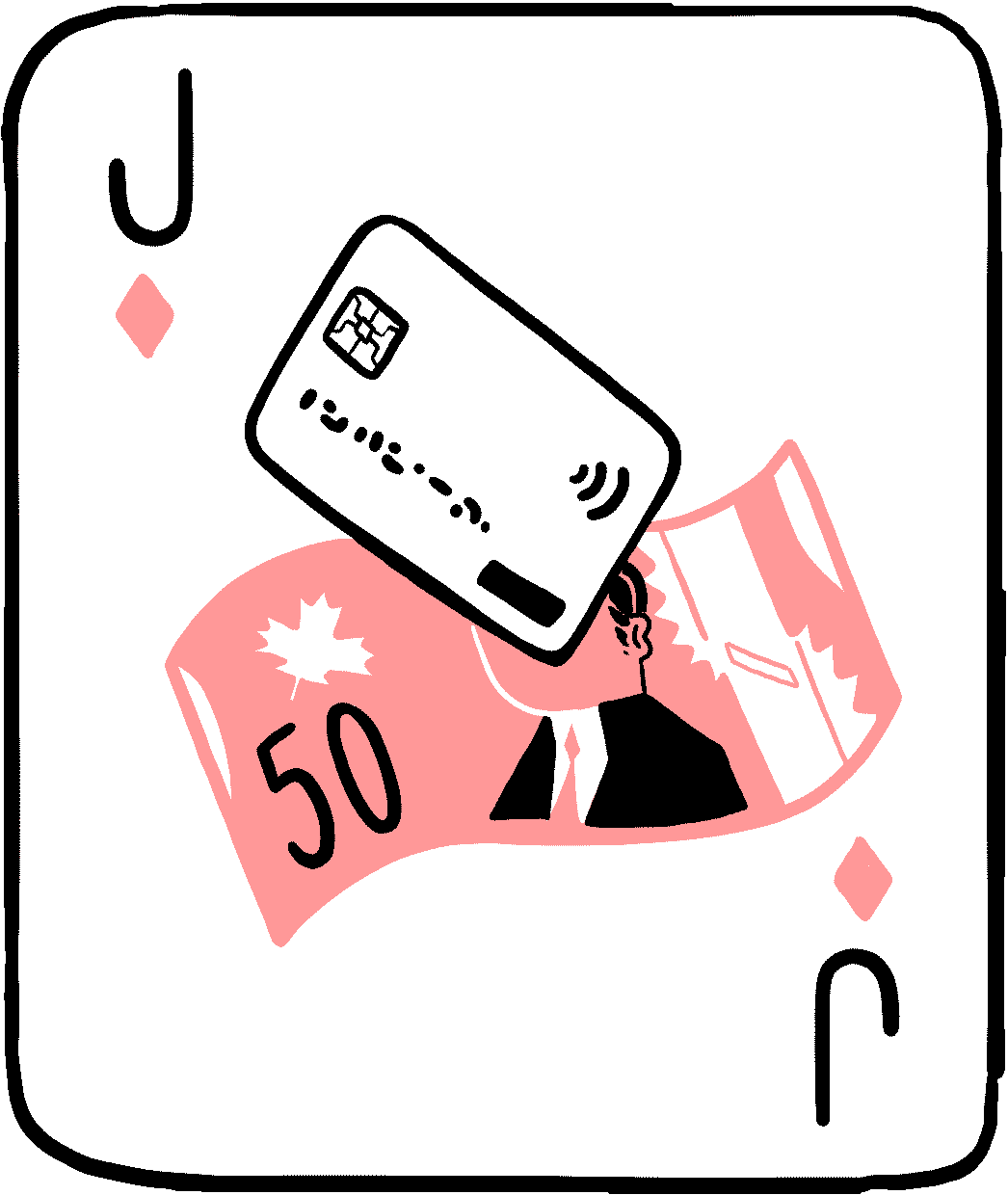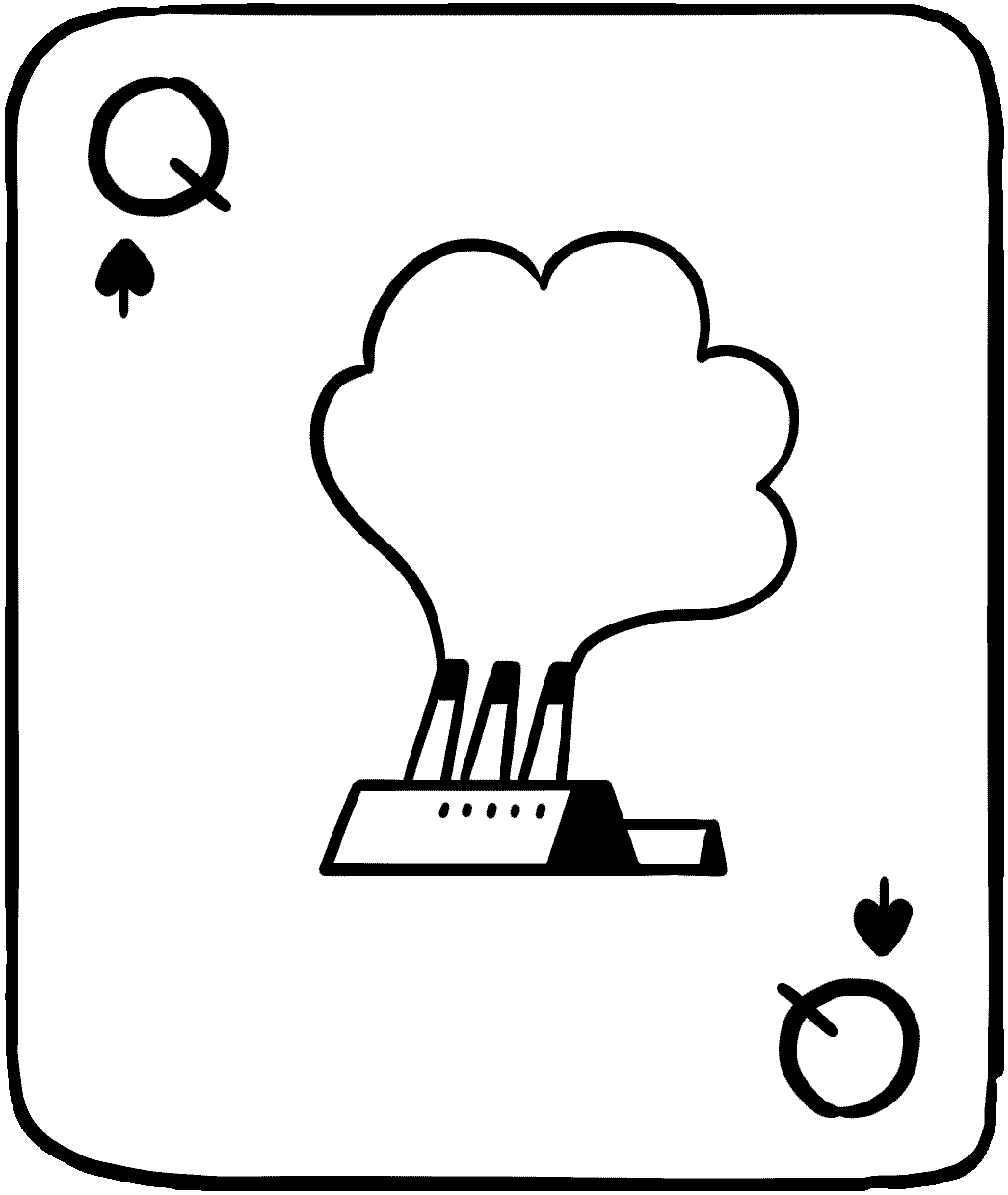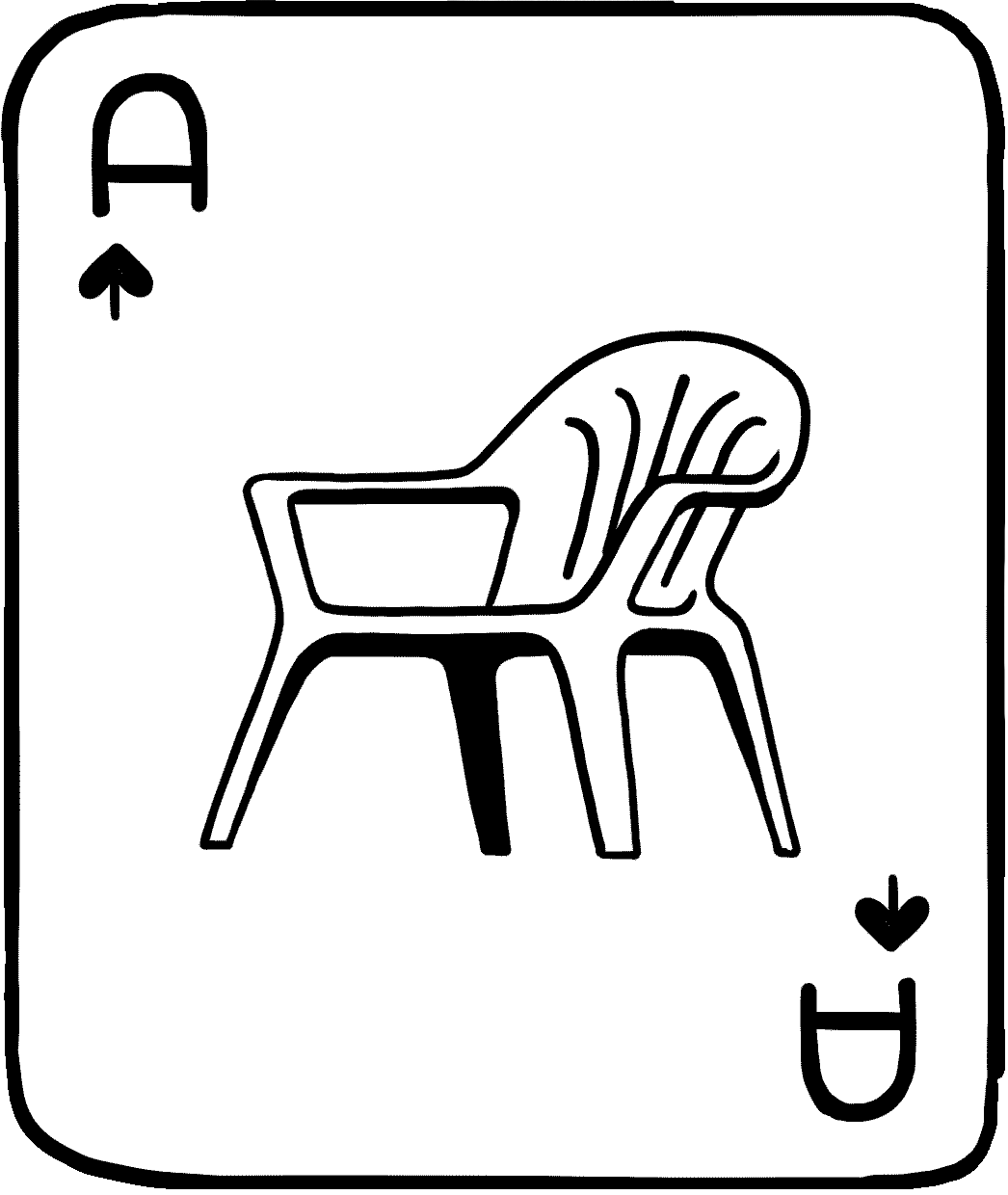The house
that plastic
built
Plastic is an industry made of other industries. Public subsidies help hold it all up.
Part II of an ongoing reporting partnership between NBC News and the Global Reporting Centre on global supply chains. Read Part I here.
We live in a world flooded with cheap subsidized plastic. It’s given us hygienic medical supplies, safer transportation, and better food preservation.
Despite the benefits of what was dubbed the “miracle material” for decades, the drawbacks have been stacking up. A 2017 study estimates only nine percent of our plastic waste has been recycled. Other studies found plastic in our rainfall and even threaded through our rocks. If the plastic industry was a country it would be among the top greenhouse gas emitters in the world. Then there’s the opportunity cost — what’s spent supporting the plastic industry instead of other public projects.
Even with 170 countries having agreed to “significantly reduce” single-use plastics, there is no indication that the industry plans to slow down.
Instead, companies and governments around the world are racing to build more capacity to produce, process, transport, and store plastic and the raw materials, such as ethane and propane, needed to make it.
How did we get here? How might things change? To answer these questions we need to start at the beginning, back when synthetic plastic was but a twinkle in the eye of a wealthy billiards enthusiast.
Part 1 About Plastic
What is plastic?
First let’s make sure we’re talking about the same thing. When we think about plastic, we might think of soda bottles or grocery bags. But plastics are also used in aircraft, tea bags, musical instruments, clothing, and medical masks. They’re in almost everything.
So we know what plastic is used for, but what is it? It’s a broad category of things that can be shaped with heat and pressure.
In other words, plastic is:
Plastics are polymers, which are molecules made up of many parts joined into a chain.
And like fossil fuels, plastic polymers are made of hydrocarbons, meaning a mix of hydrogen and carbon atoms.
A thousand purposes
We drank (probably theatrically) in great halls out of moulded animal horn. We made gramophone records out of shellac, or lac bug resin, and billiard balls from ivory. Jurassic Park could have never opened without amber.

These materials could be expensive and hard to come by. In 1863, that scarcity prompted a famous billiards player to help launch a $10,000 contest to find a replacement for ivory in billiard balls, which led to one of the first human-made plastics.
Synthetic plastics really took off when we started making them out of fossil fuels. These plastics didn’t have the same problems as materials like metal or silk — combs didn’t rust, clothes lasted longer. Using fossil fuels to produce plastic also ensured that scarcity wouldn’t be an issue: the supply of plastic, along with its uses, was seemingly limitless.
Bakelite, considered the first fully synthetic plastic, caused a stir after it was introduced in 1907.
“Bakelite.” Superficially, it is a composition, born of fire and mystery, having the rigor and brilliance of glass, the lustre of amber from the Isles. — TIME Magazine
Dubbed a “material of a thousand purposes” by TIME Magazine, Bakelite, and the many synthetic plastics that soon followed, also solved a problem within the fossil fuel industry: what to do with the byproducts of processing gasses like ethane, that would otherwise be burned off? Mix it with a few chemical additives and turn it into plastic.
Following the success of Bakelite, many new synthetic plastics were developed.
This timeline shows when various types of plastics were either first patented or introduced to the market.
A consumer utopia
During World War II, U.S. plastic production nearly quadrupled. It was used in everything from tires to radar cables to parachutes, and in the production of the nation’s first atomic bomb, serving as critically important uranium-resistant gaskets and valves.
Plastic was also used during World War II for deception. Fake inflatable tanks would sometimes be deployed as decoys. Photo credit: The National Archives #100310462 and #100310448.
When the war ended, the infrastructure to crank out plastic was still in place. Plastic producers turned their attention to the consumer market, and their timing couldn’t have been better: an expanding suburbia and booming middle class in the U.S. and Canada meant more money to spend and bigger houses to put things in.
It might seem silly now, but plastic was once “considered the very height of glamor.” This is no better epitomized than by Monsanto’s House of the Future, an all-plastic, spacecraft-style home unveiled at Disneyland in 1957.
The same properties that made plastics desirable presented a new problem: they were too durable. After the exhibit closed, demolition crews took a wrecking ball to the House of the Future. Legend has it, the ball bounced off.
To keep growing, plastic needed to be disposable. Speaking at a 1956 industry conference, Lloyd Stouffer, editor of Modern Packaging Magazine, famously told plastics manufacturers that “the future of plastics is in the trash can.” In 1963 Stouffer followed up by writing:
The happy day has arrived when nobody any longer considers the plastics[s] package too good to throw away. — Lloyd Stouffer
In living rooms across suburbia, Tupperware Home Parties had women selling the power of plastics — avocado and coral-colored food containers that could be thrown across the room without breaking and still keep your leftovers fresh. These parties also gave many women entry into the workforce during the ’50s and ’60s, and were the only place to get one of these polyethylene containers.
During World War II, Japan had control over much of the world’s natural rubber supply. Synthetic tires filled that void for Allied forces. Most tires today are near equal parts natural and synthetic rubber (among other materials) — and the tiny particles that tires shed as they roll along are a major source of microplastics in the ocean.
Nylon stockings, or nylons, were devised to replace silk. Ahead of their release, unwelcome rumors about how the nylons were made had manufacturer DuPont assuring the public they were made only of coal, air, and water. When they finally hit the market, nylons became an immediate sensation. Shortages and occasional big lineups to buy them persisted until DuPont licensed it to outside producers in 1951.
For more on the history of plastic, check out Susan Freinkel's book, excerpted here.
Plastic from oil and gas
Alongside ballooning plastic production was growing production of U.S. oil and gas, which meant even more feedstock for plastics.
How do we get polyethylene, one of the most common plastics, from natural gas?
- Natural gas is extracted from the earth. (Plastic is made from fossil fuels in many forms, be it coal, crude oil, or naphtha.)
- The compounds that make up oil and gas are separated. One of those compounds is ethane, a hydrocarbon made of two parts carbon and six parts hydrogen, or C2H6.
- The ethane, essentially a waste product, is then broken down further (or “cracked”) with extreme heat to produce ethylene, or C2H4.
- Many ethylenes, which are monomers, are then combined into polyethylene, a polymer.
- Those polymers are turned into little pellets – the building blocks of plastics.
Natural gasses
Natural gasses are fossil fuels, which form from compacted old plants, animals, and microorganisms. As these organics sink deeper and deeper into the earth, the temperature gets hotter, turning liquid to gas.
Confusion ensues when distinguishing between natural gas, natural gas liquids, liquefied natural gas, natural gasoline, and liquefied petroleum gas. We won’t try to explain that here.
Just know that the broadest category is natural gasses, which includes methane, ethane, propane, butane, isobutane, and natural gasoline (or pentane). These are all hydrocarbons with varying numbers of carbon and hydrogen atoms.
Separation
Before they’re of much use, natural gasses need to be separated, both from each other and from other things that may be mixed in there like water and carbon dioxide. Doing that usually involves heating the mixture, which separates gasses based on their individual boiling points — a sort of distilling process.
Once methane is separated out, for instance, it can be used to heat homes. The “gas” we refer to when we say “natural gas heating” is almost pure methane.
Producing plastic
Ethane is one of the gasses we use to produce plastic. After it’s been separated, ethane is put under extreme heat to “crack” its molecular bonds into the smaller molecule, ethylene. Ethylene is then combined, or polymerized, into polyethylene, and turned into pellets.
The pellets get heated to form liquid resin, poured into a mould of whatever is being made, and cooled into a finished plastic product. Other chemicals are added to the resin along the way for properties like toughness, elasticity, and color.
How much plastic is produced globally?
The International Energy Agency (IEA) estimates that in 2020 we produced 12.6 tons of plastic per second.
Global plastic production by type, 2020
IEA projections of global plastic production in 2020, by type of plastic. Measured in percent based on total production of 398.45 million metric tons. Source: Production of key thermoplastics, 1980-2050, IEA, Paris, with additional information from Statista.
EU* plastic demand by end-use market, 2019
Plastics Europe estimates for plastic demand by end-use market in the European Union (+ Norway & Switzerland), measured in percent. This data is one of the few available single-source multi-national datasets. Source: Plastics - The Facts 2020, page 24.

- Polyethylene is the most common plastic. Major types include: high-density (used in plumbing pipes, milk jugs, shampoo bottles) and low-density (used in plastic bags and food wrap).
- Polypropylene, the second most common, is durable and temperature-resistant. It’s used in takeout containers, straws, diapers, and space suits.
- PET or PETE is the most prominent of the polyesters. Almost every plastic drink bottle is made of PET. It’s also among the most recycled, especially in places with bottle deposit programs.
- PVC can be easily blended with other chemicals, so its end products, like siding, windows, raincoats, and insulation for wiring, take on a wide range of properties.
- Polystyrene is a good insulator for homes, our heads (in helmets), and eggs (in cartons). When puffed up, it can be turned into Styrofoam.

There are far more plastics than what we list here. But polyethylene and polypropylene are the most common, the most thrown away, and the kind of plastic the world is about to make a lot more of.
Why not recycle it?
Plastic waste is so pervasive that some experts estimate we each ingest and inhale tens of thousands of tiny plastic particles per year.
But single-use plastic has become so ubiquitous and convenient, going without it is hard to imagine.
So, why not recycle it?
One of the first big pushes against the waste problem in the U.S. came in 1953 from Keep America Beautiful (KAB), a non-profit founded by the American Can Company and the Owens-Illinois Glass Company.
This group’s very name and anti-littering messaging emphasized individual, rather than corporate, responsibility.

In the 1970s, Keep America Beautiful founded the National Center for Resource Recovery. According to Bradford Plumer for Mother Jones, the Center “lobbied state and national legislators to favor recycling as the means to address concerns about rising tides of garbage.”
According to recent government data, plastic waste recycling rates in the U.S. and Canada are around nine percent. China’s is at 17.6 percent and the EU’s is 30 percent. In 2018 the estimated global rate was 14 to 18 percent.
Why does the recycling rate remain so low? According to an OECD report, a key factor is how small and volatile the recycled market is compared to the market for new plastics.
The report states “the price of recycled plastics is largely driven by the price of virgin plastics, which in turn is driven by oil prices.” And there is currently no significant separate market for recycled plastics. In other words, the recycled plastics market, which is relatively small, has to compete with the much larger market for new plastics.
Recycling is complicated. Materials need to be collected, shipped, sorted, have contaminants removed, and be broken down, all while adhering to environmental and regulatory requirements. And the end product needs a buyer who is able to turn that material into something else.
Plastic that’s not recycled gets landfilled, incinerated, or exported — mostly to be landfilled or incinerated elsewhere.
China and Hong Kong used to be the largest importers of plastic waste before China restricted imports in 2018. The same OECD report notes this concentration of the market in a few key markets also contributes to its volatility. Between 2016 and 2019, the total global trade in scrap plastic decreased by 42 percent.
Key exporters of scrap plastic, 2016 - 2019
Value of scrap plastic exports measured in millions of dollars. Chart includes the top five exporters in 2016. Source: The Observatory of Economic Complexity (OEC).
Key importers of scrap plastic, 2016 - 2019
Value of scrap plastic imports measured in millions of dollars. Chart includes the top four importers in 2016, plus Malaysia — the top importer in 2019. Source: The OEC.
Recycling is part of the solution to plastic waste. But production of new plastic each year is outpacing gains in recycling rates. So the total volume of plastic waste is still increasing. Experts say what we need to do is stop making so much new plastic. We’re on track to do the opposite.
Part 2 Subsidies
What’s a subsidy?
A subsidy is a benefit given by the government for a public good — like funding development of a vaccine that is then sold nearer to cost rather than for huge profit.
Part of the reason we have so much plastic is because we subsidize it, directly and indirectly, every step of the way.
This creates a sort of circular logic. Cheap, abundant, subsidized oil and gas means cheap plastic. Cheap products can increase demand. Increased demand justifies more plastic production, which in turn justifies more oil and gas.
This is a simplistic way to describe a complicated industry, but the key is that subsidies can be the deciding factor when considering one decision (producing and using plastic) over another.

Subsidies might be used to:
- Allow smaller companies to access funding that banks might not give them
- Promote job creation in specific industries
- Help businesses deal with disruptions like pandemic shutdowns or natural disasters
- Develop risky or expensive technologies, like nuclear energy in the 1950s
- Keep the price of essentials like food and electricity low
By subsidizing plastic, the “public good” is cheap plastic and all the economic activity associated with it.
Subsidized feedstock

Subsidies to plastic start with the feedstock: fossil fuels. According to a 2021 IMF Working Paper, global subsidies to fossil fuels in 2020 amounted to nearly $6 trillion. Of those costs approximately 90 percent are ‘implicit’ — for example, the predicted costs of air pollution and the impacts of climate change (like crop damage). These subsidies help keep oil and gas flowing.
At the other end, an International Energy Agency report predicts demand for oil and gas will flatten by the 2030s, and that new growth “increasingly depends on its rising use as a feedstock in the petrochemical sector.”
Hydraulic fracturing, or fracking — a controversial way to extract hard-to-access gas from shale (rock) — is a key contributor to global oversupply.
“The U.S. is the primary country that has done fracking at scale. In the Appalachian area, you can really only frack the gas,” said Kathy Hipple, a senior researcher at the Ohio River Valley Institute and finance professor at Bard College. “They can produce a lot of gas, they just can’t make it a profitable venture.”
From 2012 to 2017, the 30 biggest shale producers lost more than $50 billion. Subsidies help them keep fracking anyway.
These subsidies are not usually hard cash, but instead serve to lower the bill by reducing costly “barriers” like zoning, taxation, and environmental regulations.
Since fracked gas can be used to produce plastic, the plastic supply chain has become the industry’s solution to so much cheap gas. In an interview with Yale E360, Steven Feit, an attorney at the CIEL, put it succinctly: “think of plastics as a kind of subsidy for fracking.”
Shell’s ethane cracker, the Pennsylvania Petrochemicals Complex, is currently under construction in Beaver County, PA. It's set to open in 2022 and produce 1.6 million metric tons of virgin plastics pellets a year. See Part I for more. (Photo: Hannah Rappleye / NBC News)
Producing, transporting, and disposing of plastic is also subsidized:
Demand for supply
The plastic industry predicts demand for new plastic will increase. Some trends suggest otherwise. One hundred and seventy countries have pledged to “significantly reduce” plastic use by 2030 — China, France, India, and Kenya are among those that have already implemented bans or restrictions on certain single-use plastics. Advocacy groups are pushing to prevent microplastics from entering our waterways. Increases in the cost of plastic waste exports have, in some cases, led to better local recycling.
But the industry is pushing back. The global response to the COVID-19 pandemic increased demand for single-use products like masks, syringes, and other vital supplies, though we don’t know if that demand will persist.
Even if the industry’s optimistic projections come to pass, the additional production capacity slated to come online in the next few years is expected to exceed demand.
Much of the plastic that comes into the lives of individual consumers has been unsolicited, unexpected, and generally unwelcome. It goes out again as quickly as it came in. — Carroll Muffett, President & CEO of the Center for International Environmental Law
So, when we talk about demand for plastic, whose demand are we talking about?
Part 3 What to do?
Global effort
For all the problems with plastics, in many applications they’re irreplaceable, or the best option when considering all of a product’s impacts, from when it’s made to when it’s disposed of.
So, what can be done? Produce less of it in the first place, particularly single-use. And for the plastic we do need to use: reuse it.
There are a number of barriers that make recycling harder, and sometimes more expensive, than producing new plastic. But according to reports from the OECD, S&P Global Platts, and Environment and Climate Change Canada (ECCC), recycling can be made more viable through:

- Regulations: the “first domino” according to the ECCC report is to set quotas and regulations that help establish stable end markets for recycled materials. These could include taxes on new plastics, requirements that certain products be made of a minimum percentage of recycled content, or new laws that increase a producer’s responsibility for their waste.
- Reuse: products that can be reused multiple times before needing to be recycled. Standardization: more easily-recyclable standards that many different facilities can process.
- Cleaner recycling: emission-controlled processing that runs on clean energy.
- Collaboration: among all stakeholders at every step of the global supply chain.
Without these sorts of measures implemented on a global scale, recycling rates are unlikely to increase.
Several recent reports looked at how we might reduce plastic waste under 'business as usual' consumption patterns.
One report, commissioned by Google, found that better chemical and mechanical recycling, as well as pricing, could reduce waste by 50 percent and still be more cost-effective than our current path. Education and consumer-facing initiatives — those pushed by Keep America Beautiful and others — amounted to about one percent of difference. Even with coordinated global effort, this report estimates up to 46 percent of plastic waste will be left mismanaged.
Another commissioned by ECCC (mentioned earlier) mapped out what a zero plastic waste scenario in Canada would look like by 2030. Zero waste meant a net gain of $500 million (including the value of currently unrecovered plastic), a net gain of jobs, and a net annual greenhouse gas savings of a million tons of CO2 equivalent. This depends on Canada’s access to clean energy, but given Canada’s size and relatively low population density, this is still a notable example.
And banning low-value plastic waste exports to one country doesn’t mean much if it can be routed to another. Same with banning single-use products domestically while subsidizing their production for export (as Canada does), or banning fracking at home while importing fracked gas from abroad (as the U.K. does).
Experts say changes need to start with high-income countries, those most responsible for plastic waste, yet least impacted by the consequences.
And some cross-border changes are happening: this year, more than 130 countries approved a global minimum corporate tax, and 45 have some form of carbon pricing. As of January 2021, import and export of plastic waste is regulated among 187 countries as part of the Basel Convention — with the United States as a notable holdout.
Yet it’s the countries with the greatest ability to make an impact that often push back. Documents leaked to Greenpeace ahead of the COP26 climate summit allegedly show governments and lobbyists were already working to downplay findings and recommendations of the latest UN IPCC climate reports.
This type of lobbying is something the plastics industry is no stranger to: As we’ve seen throughout history, like with Keep America Beautiful and the involvement in the recycling movement, the industry has been able to adapt and grow, while also influencing and changing public perception. That is because it is made up of giants — fossil fuel, petrochemical, and packaging companies, all leaning on one another. But it’s public subsidies that help keep the house of cards standing.
The power to change, to curb the growth of cheap subsidized plastic, rests in the hands of governments, companies, and policymakers. It’s on them to start pulling out some cards.
Corrections: an earlier version of this piece captioned the inflatable tank images as photos of the U.S. 23rd Headquarters Special Troops. According to the National Archives, they're of the Fifth Army. This version also labelled Steven Feit as an attorney for the IEEFA instead of the CIEL.